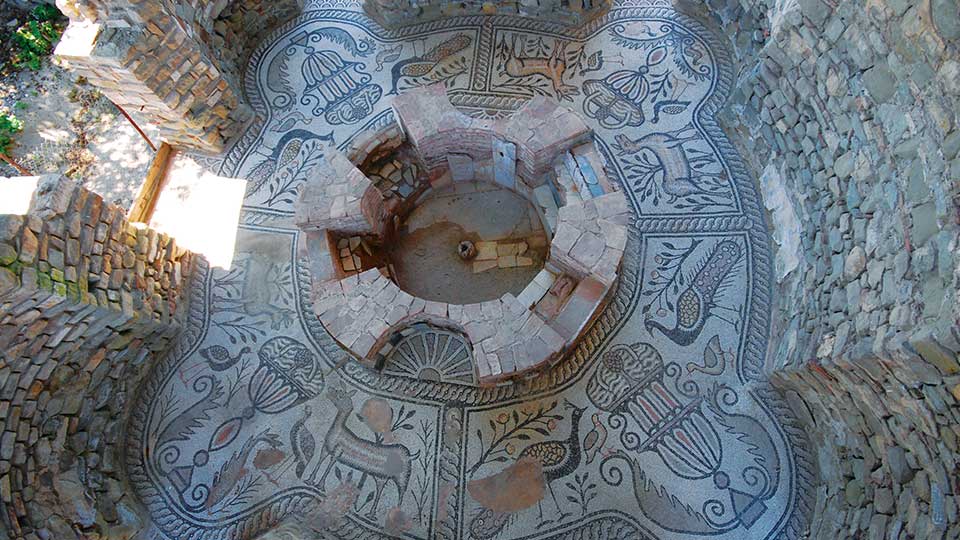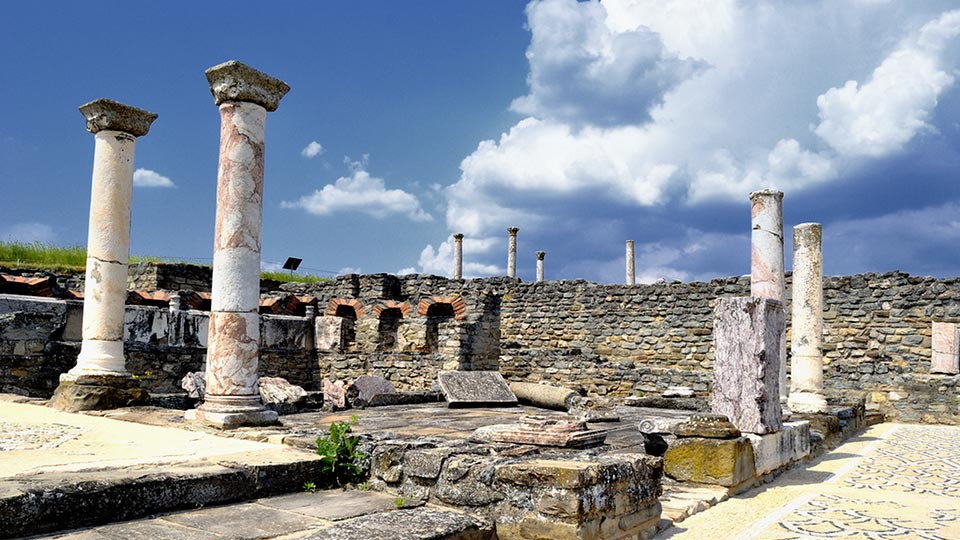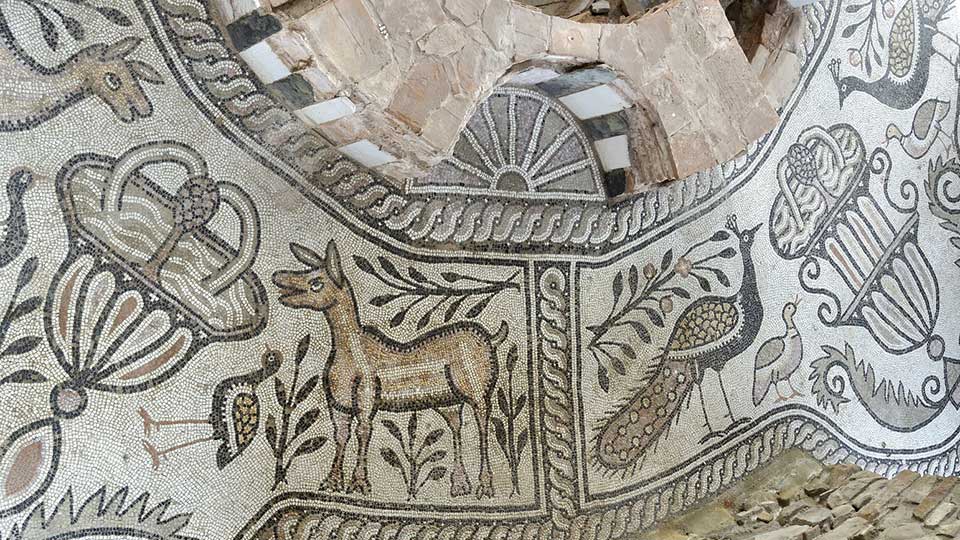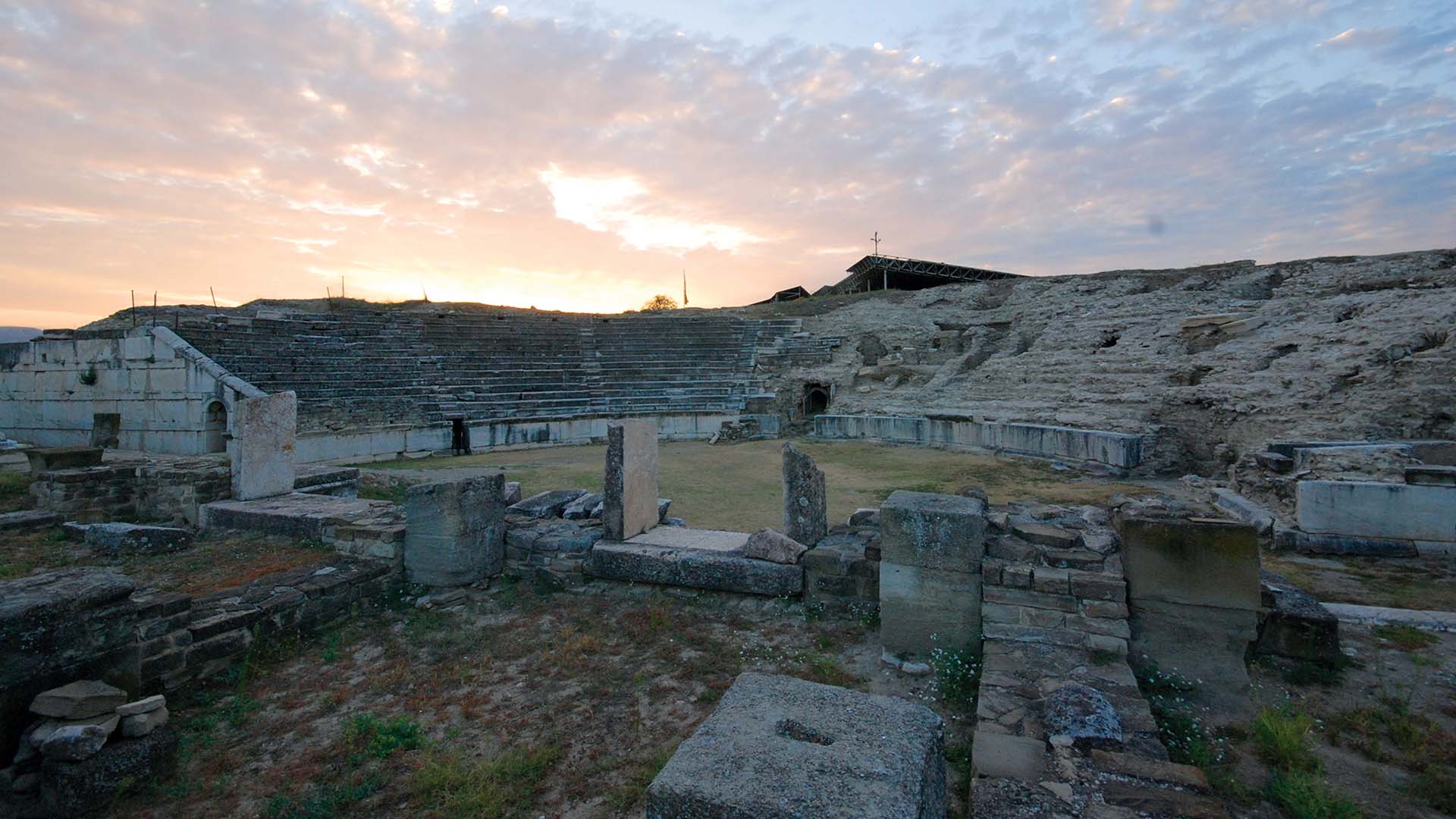Location of Stobi
In the Ι century BC Stobi reaches its maximum size of 27 hectars within the city walls. On the east side, the wall stretches about 450 meters long and is only a dozen meters away from the river bed of the river Crna. It has been documented during the research of Casa Romana from which it is one street appart. This segment of the city wall was in use until the fourth century, when the river flooded the city.
Frequent flooding will cause Stobi to be pulled to the inside. With the construction of the new wall, older buildings were restricted. This is best seen in the section of the Arc Building. It is interesting that theater seats were built in the wall, which in some way determine the construction of the wall towards the end of the 4th or the beginning of the 5th century. In 2008, the southeast part was discovered where the defensive wall is preserved at a height of 4 meters above the foundation zone. It was found that at this height the wall had a belt of at least 4 rows of bricks, above which rows of stones followed again.

New discoveries in Stobi
In 2009, in Stobi, the corner where the old and the new segment of the wall merged was discovered. Here an internal tower was documented. On the south, west and north sides, the defensive wall retains the same direction throughout centuries. Many renewals and even doubling are observed. Its average width is 2.50 meters and 8 square towers have been revealed so far. The main gate of the city is located in the southern part of Stobi. This place was called by the locals "Porta", in the time before the first excavations. It was explored in 1930, in 1972 and in 2001-2002. The gate is called "Porta Heraclea" or "Porta Sacra".

The first name for the city of Stobi was inspired by the road that went out of the gate and led to Heraclea Lyncestis. The second name, however, refers to the fact that it is coming directly to the city necropolis. The gate is dual, i.e. it is slightly drawn from the line of the wall and there is a prior gate with an arch above the entrance. Towards the end of the 4th and the beginning of the 5th century, at a distance of 9 meters before the gate, two towers were added. In their construction seats from the theater were used. According to some researchers, these two towers make the gate dipillon, while according to others, they are propillon and a part of proteychism.
During the archaeological research of Stobi in 2010, a new gate was dicsovered which was built during the 6th century on the southwestern part of the wall (within the Temple section). In 2009, 326 meters from the western line of the defensive wall were discovered and at least two major stages in its construction were defined. In 2010, it was ascertained that the wall cut older buildings, and the space next to the wall was used for burial in Late Antiquity.

More informations about Stobi can be found on this website.

